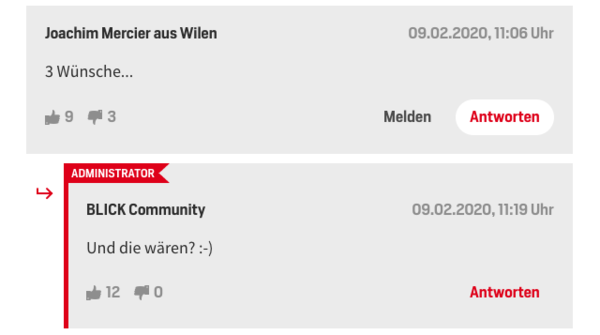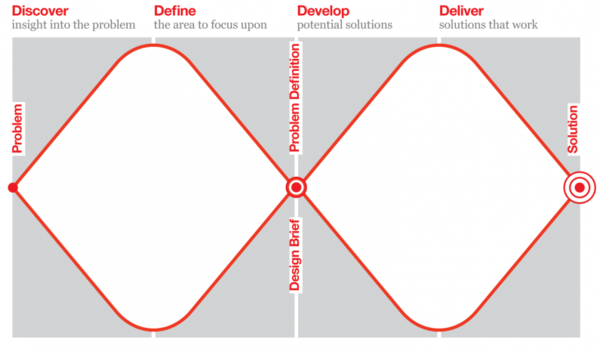Let’s talk a bit about teamwork perception.
Good morning, a few weeks ago, I had a conversation, and one statement stuck with me until today.
It was a discussion about me providing a solution. The other person said: “You should be excited about this opportunity. You’ll benefit from this as well.”
I can’t go into much more detail about the discussion. However, I can say that the subject was stressful and, in fact, my team nor I benefited from the whole matter. Actually, the opposite was the case.
It’s unveiling a pessimistic attitude towards people.
Even though the statement was simply untrue, I started to explore this kind of communication. And maybe you’ve also experienced similar behaviour yourself.
I think it originates in fear. Fear of failure and rejection. Moreover, it’s unveiling a pessimistic attitude towards people: Others only will do something for me if they gain personally from the action. The negativity leads then to such manipulative communication.

The attempt of manipulation felt almost like an attack on my values and beliefs.
My stance is that I want to help people by providing them with the tools and approaches necessary. I rather think holistically about a product than just about the things in my responsibility. Therefore, I don’t act only to gain personal advantages. And I’m well aware of whether I benefit directly or not. The attempt of manipulation felt deeply personal – almost like an attack on my values and beliefs.
I don’t know about you, but to me, this approach to persuading someone through manipulative communication is a significant problem. Although it might work sometimes, it creates a flawed culture. Real and sustainable collaboration isn’t possible if manipulation is the foundation.
We’re confronted with digital disruption, and we are facing immense challenges. Manipulative persuasion has to become a relic from the past when the internal competition wasn’t as problematic (but still stupid, to be honest). We have to facilitate a mindset of collaboration and get rid of the notion that people only act because of egoistic reasons.
I recognize the behaviour that I’ve experienced and my irritation as part of the inevitable cultural transformation clashes. Naturally, I show my belief in unconditional collaboration rather than just speaking of it. However, I still struggle to find a proper response. It seems that some people either still don’t believe it or are very suspicious.
Now, I’m happy to know if you’ve experienced similar issues. Do you have advice on how to tackle such behaviours? I’m looking forward to hearing about your thoughts and techniques. Just hit reply on this mail.
Thanks, and stay safe.

Learnings From A Decade
What I learned from running an online magazine for ten years.
Hi there, it’s been a long time since the last newsletter. However, I still was shocked that it’s been already three months. Time flew by like a fighter jet, and sometimes I felt like a passive passenger, not a pilot.
The most critical decision in the past months was probably to close down my online magazine Negative White after a decade of voluntary efforts. There are two reasons for the decision:
Increased Workload
By the end of June, I got appointed as product manager for Blick.ch. I’m excited about this tremendous opportunity, and I love to work more on projects, development, and strategy.
However, it adds a ton of mental workload to my already tight schedule as Head of Community and product manager for our newsletters. I felt that I had to re-organize my energy.
Lost Joy
But what really drove the decision was the lack of joy, a general sense of fulfillment in work on Negative White. Sure, there were moments of happiness and success. Nevertheless, the moments when I felt overwhelmed and stressed by the things on my to-do list occurred ever more frequently.
In the very first newsletter issue I sent through Revue, I wrote about three key metrics: joy, relationship, and money. Joy was always the most significant driver for Negative White. Its decrease, therefore, led to the rational consequence: the era had to end. Don’t get me wrong; it was a tough decision nonetheless.

In 2018, I listed some of my learnings that Negative White provided in this newsletter. They’re still valid, but I’d like to offer a synthesized summary here:
Hi there, who would have thought that a virus is turning out to be the biggest driver of digitization and decentralized working environments?
The coronavirus uncovered many issues: Schools were not prepared at all, businesses that put shareholder value above all are struggling, and the lack of digital infrastructure in Switzerland’s public administration is staggering.
However, I’m concerned about the debate around remote work. Although the home office policies were ramped up quickly by enterprises all around the globe, they’re not representative of the transformation of our working environment. Let me explain why.

The advantages of working from home have been confirmed over and over again. The employees are more productive, an observation I made about myself in the last three weeks while in the home office. Also, a team member confirmed that she felt more obliged to be productive than usual. She claims it’s because working from home gives her more responsibility in managing her day.
Lately, I’ve been thinking a lot about agile development. This year, we’ve been able to deploy a series of new features for our commenting infrastructure. While most of them are invisible to the users, there is one exception: Finally, we’re able to engage in the comment sections clearly labelled as official accounts.

Often, people in the newsroom are staggered about the velocity of new features we manage to release. They tell me about their struggle to get things done. These complaints regularly come from people with a background in journalism. And I think that’s the problem.
Human-centered Storytelling
How Design Thinking improves audiences-driven journalism.
Design Thinking has become a major buzzword in the last few years. It is clear that Design Thinking is not the solution for everything. However, as a human-centred framework that “integrates the needs of people, the possibilities of technology, and the requirements for business success” (Tim Brown), Design Thinking may provide a useful process for public-powered journalism.
In a research paper for my master’s degree in Digital Management at Hyper Island, I explored the ways Design Thinking could be applied in journalism. This article is a comprehensive summary of said paper as well as a start for further discussions and improvements.
Let’s take a look at the Design Thinking process as described by the British Design Council.

It starts with a problem statement. After that, there are four phases visualized by a double diamond:
- Discover: Gaining insights into the problem
- Define: Synthesizing research findings
- Develop: Ideating potential solutions
- Deliver: Implementing a solution that works
Sometimes a fifth phase is added to show that the delivered solution is iterated over and over. Dan Nessler, a Hyper Island alumni and Head of UX at Hinderling Volkart, wrote a comprehensive guide to the Design Thinking process if you want to dig deeper into that topic.
Why should Design Thinking be applied in journalism?
The general definition of journalism may be summarized in three services to society: Information, explanation, and classification. But: “The bulk of news stories get created without the customers (the audience) meaningfully involved in the decisions that shape the product (the story),” writes Jennifer Brandel, CEO of Hearken. Interaction with the “people formerly known as the audience” usually happens after the publication.
However, many studies indicate a positive effect on business success in media companies that engage with their users early on. So it’s quite a paradox that most journalists believe that their work is vital to serving the public interest but are wary of allowing readers to dictate what’s newsworthy. There’s an excellent paper by James G. Robinson about the journalist’s perception of their readers.
Today, journalism is competing in the rambling attention economy of the internet. The competitors are not only other publishers but social media platforms as well. It is, therefore, essential to attract attention by focusing on people’s needs. Also, the world is getting more interconnected, and humanity tackles complex problems. A focus on the readers’ questions helps journalism to fulfil its purpose in society.
Design Thinking can help to achieve a higher engaged community and erase the gut feeling about interests and relevance by actively including the readers in the process. However, this does not conclude that the readers will make every decision. In terms of journalism, the newsroom still can decide but always with the reader in mind. The success stories also show the economic viability of a human-centred storytelling approach. The publishers are struggling with financial sustainability. Therefore, it is crucial to focus the resources at hand on the people’s needs.
Moreover, a loyal audience is vital for business success, whether the publisher bets on ad revenue, memberships, contributions, or subscriptions.
Introducing the Human-centered Storytelling framework
Keeping the readers in mind has already become a habit in many newsrooms. However, the idea of including them in the editorial process feels worrisome and abstract to the reporters I interviewed for the research paper.
Why Do Journalists Have A Hard Time Listening To The Audience?
If you ask an older journalist about the past, you will hear at least some crazy stories. By crazy, I mean batshit insane.
If you ask an older journalist about the past, you will hear at least some crazy stories. By crazy, I mean batshit insane. Things happened back then; you could not imagine in your wildest dreams. You inevitably ask yourself how they managed to create a newspaper every day.
It was a different time, and a different mindset ruled in newsrooms. I’d even state that it was an ego-driven approach to journalism. I, the journalist, have an idea for a story, and I will write it – no matter what. The journalists had total control over the process, and feedback or criticism was lagging. Maybe some letters were sent, and perhaps some phone calls were received.
Yeah, those were the good, old days, the aging journalist will tell you.
But were they really that good?
